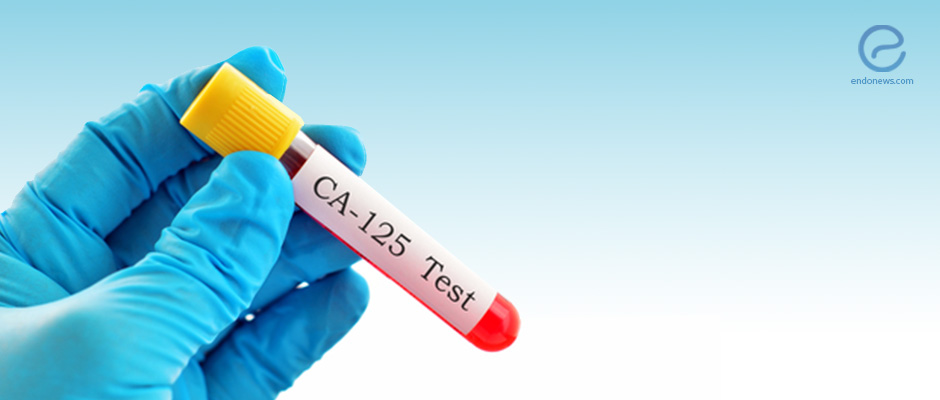CA-125 may be useful for the diagnosis of deep infiltrating endometriosis
Jul 26, 2017
An effective use of a known serum biomarker in "Deep Infiltrating Endometriosis."
Key Points
Highlights:
- For an early diagnosis of DIE (Deep Infiltrative Endometriosis), the performance of CA-125 measurement was evaluated in two different (menstrual and mid-cycle) phases. The difference in the levels between the two was also calculated.
- Possible marker to decrease the long interval until the definitive diagnosis of DIE.
Importance:
- Despite the advanced image exams, the median time interval from the onset of symptoms to diagnosis of endometriosis, including DIE, is around eight years.
- Employing a readily available serum biomarker could shorten this time and make screening more accessible and easily standardized.
What's done here:
- This prospective study was conducted at outpatient gynecology clinic and Endometriosis Treatment Center in Pedro Ernesto University Hospital (Rio de Janeiro State University) between January 2012 and January 2016.
- Two groups of patients, DIE case group and tubal ligation control group were compared.
Key results:
- Serum CA-125 values were significantly higher in patients with DIE than in controls in both phases of the cycle.
- Serum CA-125 values were lower in mid-cycle than in menstrual phase, in both groups.
- The specificity of this test was 100%.
- The performance of the difference of CA-125 between menstrual and mid-cycle phases and the ratio (the percentage of increase) of CA-125 were evaluated. This difference was found statistically significant (p< .0001).
- As contraceptive pills decreases and the presence of adenomyosis increases CA-125 levels, patients using contraceptive pills and those with adenomyosis excluded from the study group.
Limitations:
- Small sample size
- The whole spectrum of endometriosis was not included.
- The presence of adenomyosis may not be easily diagnosed which alter the CA125 levels.
- CA-125 may be altered due to other causes which have not been evaluated in this study.
Lay Summary
Marco Aurélio Oliveira et al. conducted a prospective study at outpatient gynecology clinic and Endometriosis Treatment Center in Pedro Ernesto University Hospital (Rio de Janeiro State University) between January 2012 and January 2016 with two groups of patients: deep infiltrating endometriosis (DIE) case group and tubal ligation control group. The performance of CA-125 measurement was evaluated in the menstrual and mid-cycle phases of the cycle, and the difference between the two the for an early diagnosis of DIE. It is a well-known fact that despite the advanced image exams, the median time interval from the onset of symptoms to diagnosis of endometriosis, including DIE, is around eight years. Employing a serum biomarker readily available could shorten the long interval until the definitive diagnosis of DIE. Many other studies have examined the feasibility of using serum CA-125 in diagnosing endometriosis, but they all have presented different results due to sensitivity. The reference (35 IU/mL) cut off is being used for ovarian cancers with epithelial origin. And CA-125 levels fluctuate during different phases of menstrual cycle.
In this 54 patient study published in the journal "BioMed Research International," serum CA-125 levels were measured between the 2nd and 4th day of the menstrual cycle and mid-cycle between the 13th and 15th day of the menstrual cycle. These two values were evaluated. In patients with DIE serum CA-125 values were significantly higher than in controls in both phases of the cycle. Serum CA-125 values were found lower in mid-cycle than in menstrual period, in both groups.
The goal of this study was to improve the diagnostic performance of CA-125 by measuring the difference between these two values collected in menstruation and mid-cycle. The rationale is that, in women with endometriosis, the CA-125 would reach its highest level during menstruation due to the most marked inflammatory process. Fluctuations in CA-125 levels during menstruation seem to occur by endometrial desquamation during menstruation and the consequent breakdown of the tissue-hematological barrier for a short period.
With two measurements, it is possible to evaluate the performance of CA-125 during menstruation and mid-cycle and to calculate the difference between these two moments in the cycle. Since no patient in the control group (tubal ligation) had CA-125 levels higher than 35 IU/mL outside menstruation, higher CA-125 levels outside menstruation could be used to rule in deep endometriosis. It is also found that patients with DIE have higher CA-125 levels during menstruation when compared to patients in the control group.
What would be the advantage of using both measures instead of just one? As shown in this study the first potential advantage of using CA-125 in two different phases of the cycle is the possibility of identifying a high CA-125 level in the middle of the cycle. In this study of the 18 patients with positive mid-cycle CA-125, all were diagnosed with DIE.
When mid-cycle CA-125 is negative, measuring menstrual CA-125 could be helpful. If it is positive, there is a high probability of endometriosis. If it is negative, the probability of endometriosis is low, but some women with DIE have negative CA-125 in both phases. In this scenario, one additional usage is to calculate the difference of the measurements of the CA-125.
"When collected during menstruation and in mid-cycle CA-125 may be useful for the diagnosis of deep endometriosis" concluded researchers. This knowledge may become useful to decrease the interval between the first complaints and the definitive diagnosis of deep endometriosis.
Research Source: https://www.ncbi.nlm.nih.gov/pubmed/28660213
DIE CA-125 Deep Endometriosis Serum Biomarkers

